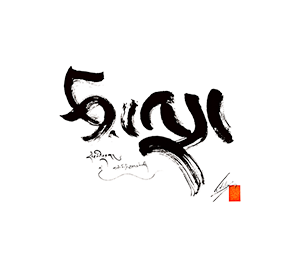Karl Brunnhölzl: On His First Encounter with the Buddha-Nature Teachings - 1 of 17
Video
Video
Sources Mentioned
Gampopa: Ornament of Precious Liberation: A Wish-Fulfilling Gem of Sublime Dharma
One of Gampopa's most enduring works. It was one of the first "stages of the path" (lam rim) texts to be written by a Tibetan, after the genre was introduced by Atiśa through his famous composition Bodhipathapradīpa, The Stages of the Path to Enlightenment.
Dwags po thar rgyan;The Path;Kagyu;Gampopa;སྒམ་པོ་པ་;sgam po pa;dwags po lha rje;bsod nams rin chen;dwags po zla 'od gzhon nu;dwags po rin po che;དྭགས་པོ་ལྷ་རྗེ་;བསོད་ནམས་རིན་ཆེན་;དྭགས་པོ་ཟླ་འོད་གཞོན་ནུ་;དྭགས་པོ་རིན་པོ་ཆེ་;Jé Gampopa;Dakpo Rinpoche;Takpo Rinpoche;Je Dakpo Rinpoche;Je Takpo Rinpoche;Da'od Zhonnu;Dagpo Lhaje;The Physician from Dagpo;Nyamed Dakpo Rinpoche;The Incomparible Precious One from Dagpo;Ü-pa Tönpa;dam chos yid bzhin gyi nor bu thar pa rin po che'i rgyan;དམ་ཆོས་ཡིད་བཞིན་གྱི་ནོར་བུ་ཐར་པ་རིན་པོ་ཆེའི་རྒྱན།;དམ་ཆོས་ཡིད་བཞིན་གྱི་ནོར་བུ་ཐར་པ་རིན་པོ་ཆེའི་རྒྱན།
- Ratnagotravibhāga Mahāyānottaratantraśāstra
The Ratnagotravibhāga, commonly known as the Uttaratantra, or Gyu Lama in Tibetan, is one of the main Indian scriptural sources for buddha-nature theory. It was likely composed during the fifth century, by whom we do not know. Comprised of verses interspersed with prose commentary, it systematizes the buddha-nature teachings that were circulating in multiple sūtras such as the Tathāgatagarbhasūtra, the Mahāparinirvāṇasūtra, and the Śrīmaladevisūtra. The Tibetan tradition attributes the verses to the Bodhisattva Maitreya and the commentary to Asaṅga, and treats the two as separate texts, although this division is not attested to in surviving Indian versions. The Chinese tradition attributes the text to *Sāramati (娑囉末底), but the translation itself does not include the name of the author, and the matter remains unsettled. It was translated into Chinese in the early sixth century by Ratnamati and first translated into Tibetan by Atiśa, although this text is not known to survive. Ngok Loden Sherab translated it a second time based on teachings from the Kashmiri Pandita Sajjana, and theirs remains the standard translation. It has been translated into English several times, and recently into French. See the Ratnagotravibhāgavyākhyā, read more about the Ratnagotravibhāga, or take a look at the most complete English translation in When the Clouds Part by Karl Brunnholzl.
Ratnagotravibhāga Mahāyānottaratantraśāstra;byams chos sde lnga;Uttaratantra; Sajjana;ས་ཛ་ན་;sa dza na;paN+Di ta sa dza na;sa dzdza na;པཎྜི་ཏ་ས་ཛ་ན་;ས་ཛཛ་ན་;Ratnamati;Rin chen blo gros;རིན་ཆེན་བློ་གྲོས;theg pa chen po rgyud bla ma'i bstan bcos;ཐེག་པ་ཆེན་པོ་རྒྱུད་བླ་མའི་བསྟན་བཅོས།;Ratnagotravibhāga Mahāyānottaratantraśāstra;究竟一乘寶性論;रत्नगोत्रविभाग महायानोत्तरतन्त्रशास्त्र;ཐེག་པ་ཆེན་པོ་རྒྱུད་བླ་མའི་བསྟན་བཅོས།
People Mentioned
About the video
| Featuring | Karl Brunnhölzl, Karma Phuntsho |
|---|---|
| Creator | Tsadra Foundation |
| Director | Perman, M. |
| Producer | Tsadra Foundation |
| Event | What Is My Mind without Me? Buddha-Nature in the Karma Kagyu School by Karl Brunnhölzl (26 February 2022, Munich and Bhutan) |
| Related Website | Buddha-Nature |
| Creation Date | 26 February 2022 |
| Citation | Brunnhölzl, Karl. "On His First Encounter with the Buddha-Nature Teachings." Conversations on Buddha-Nature with Lopen Dr. Karma Phuntsho. Produced by the Tsadra Foundation Research Department, February 26, 2022. Video, 4:58. https://www.youtube.com/watch?v=uGz9UFYijB8. |
